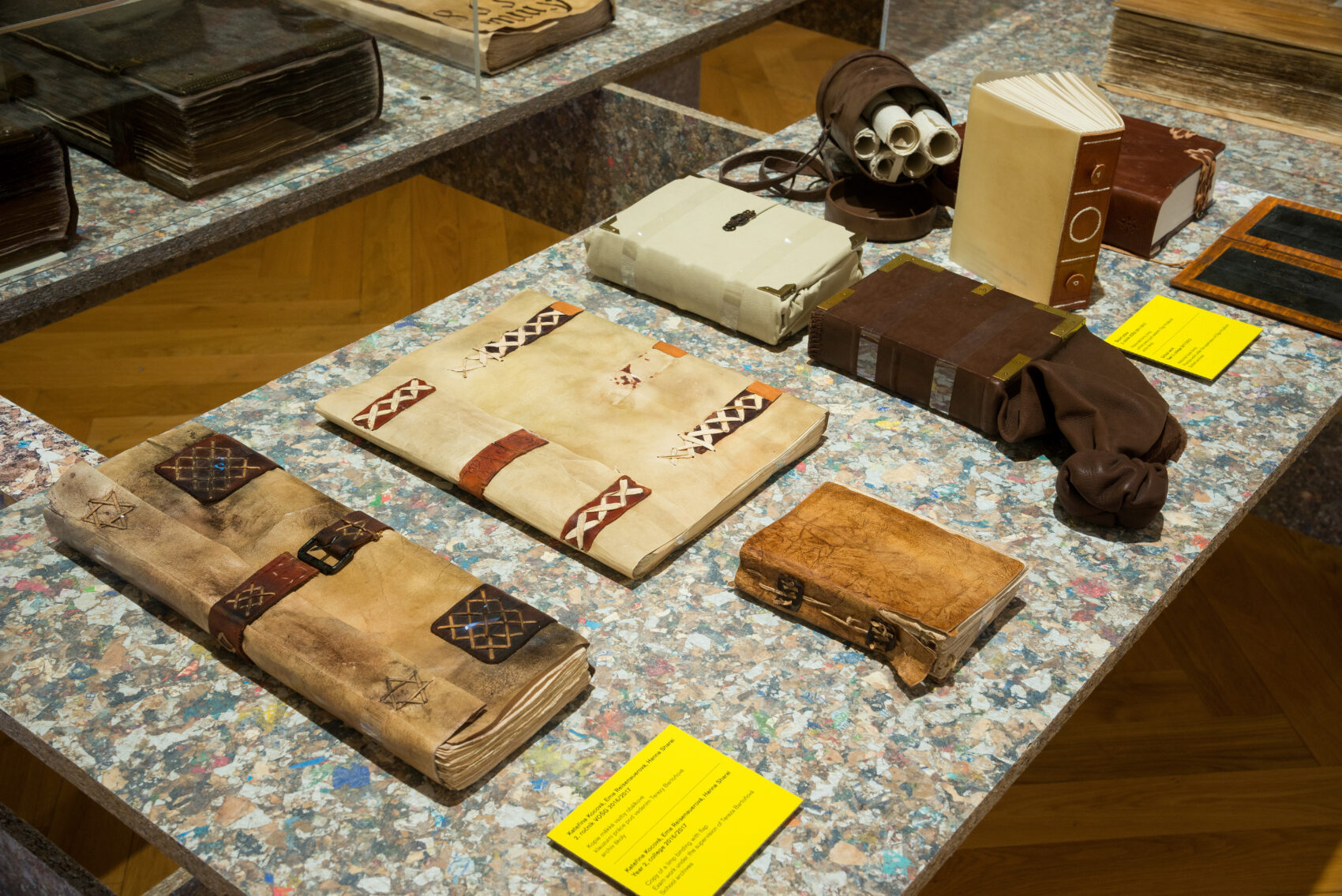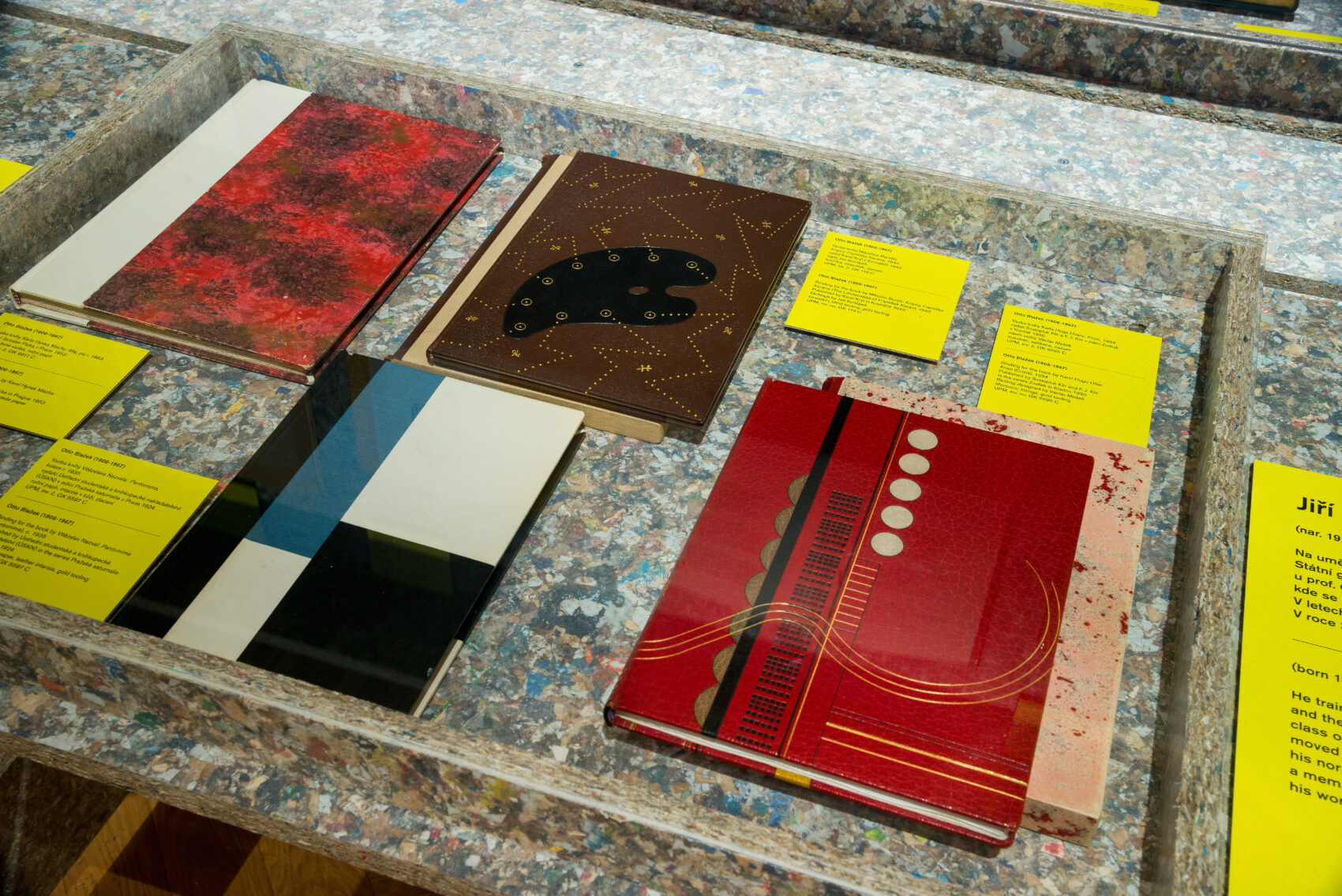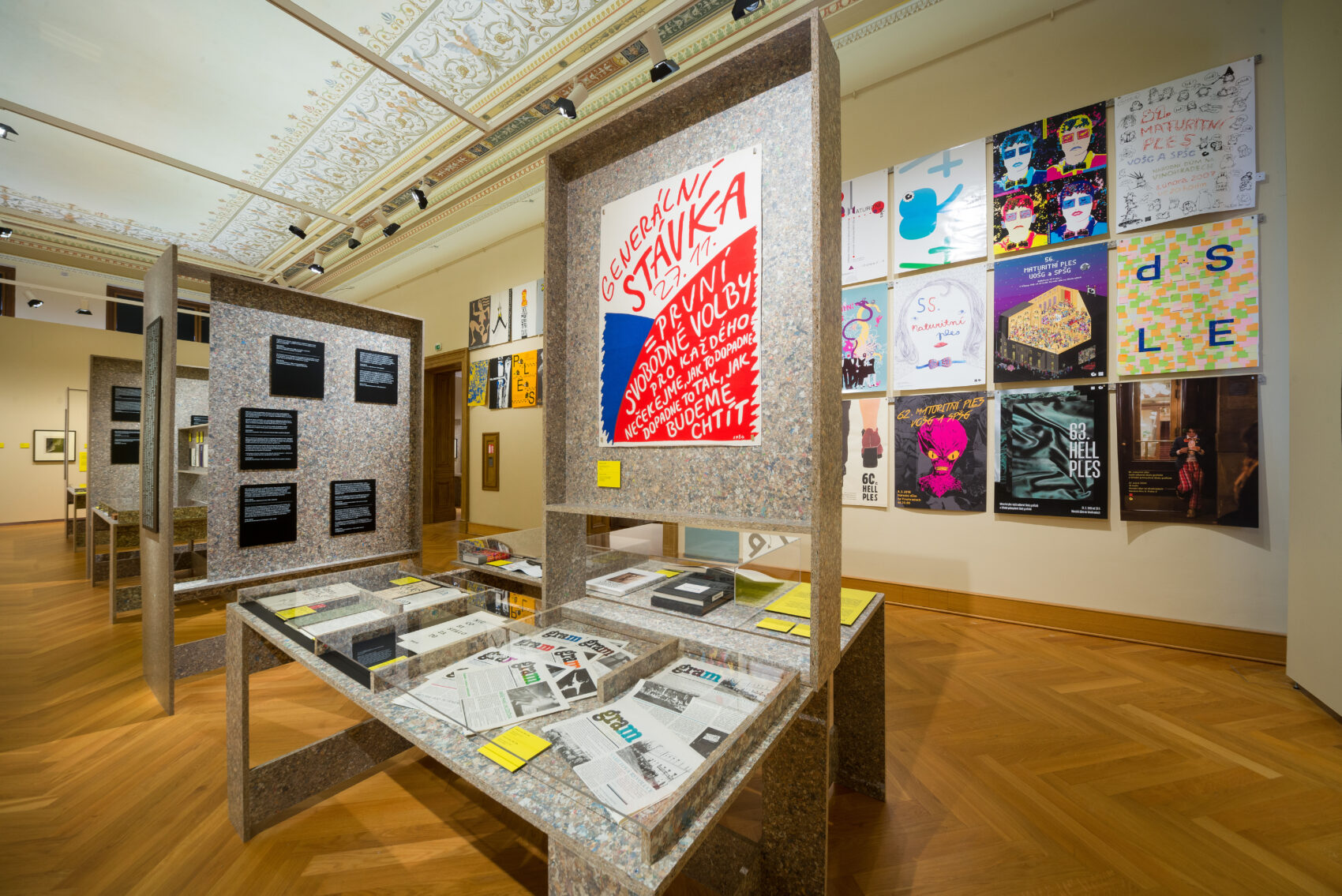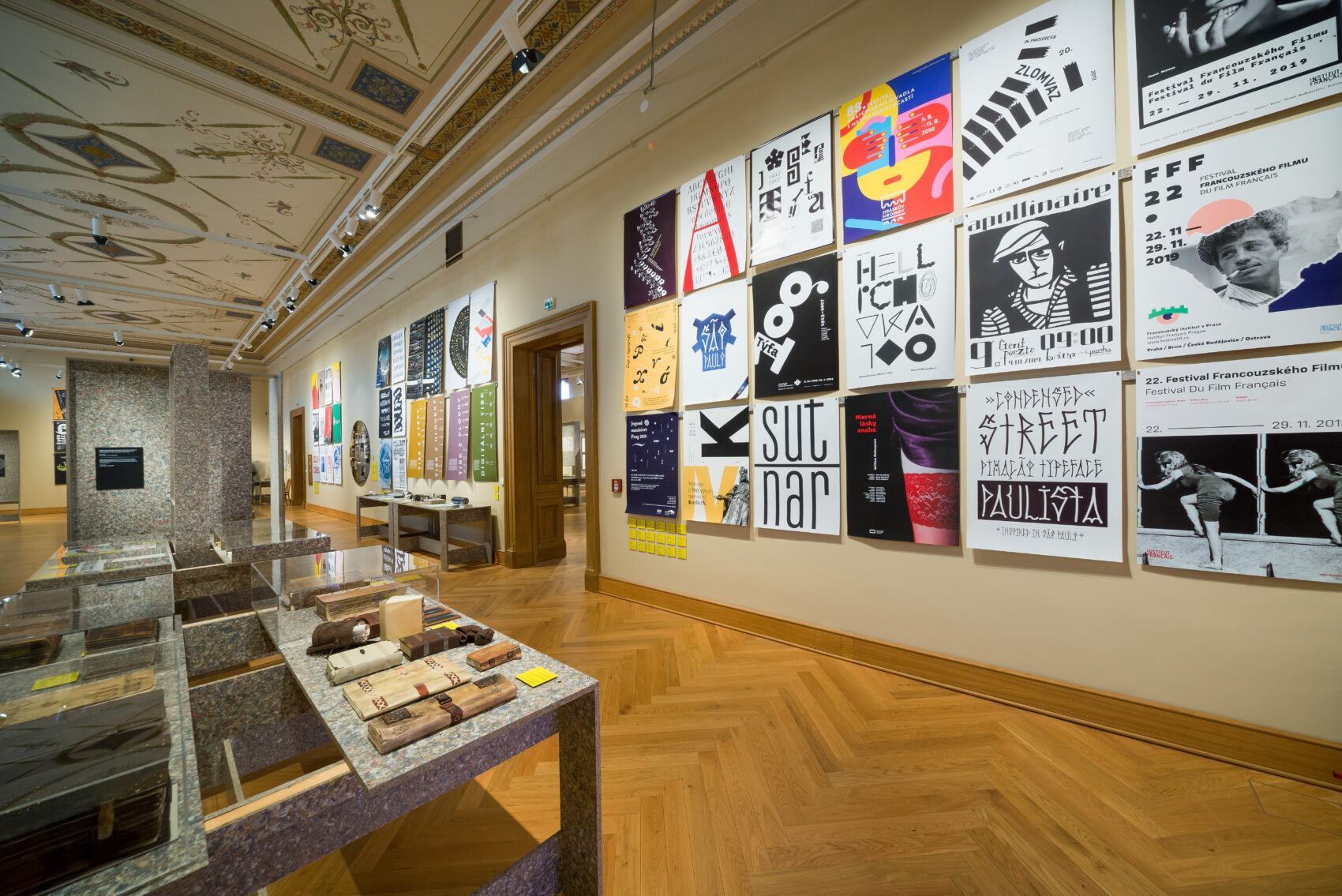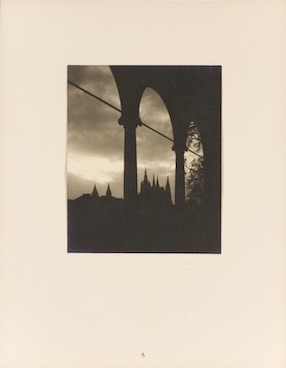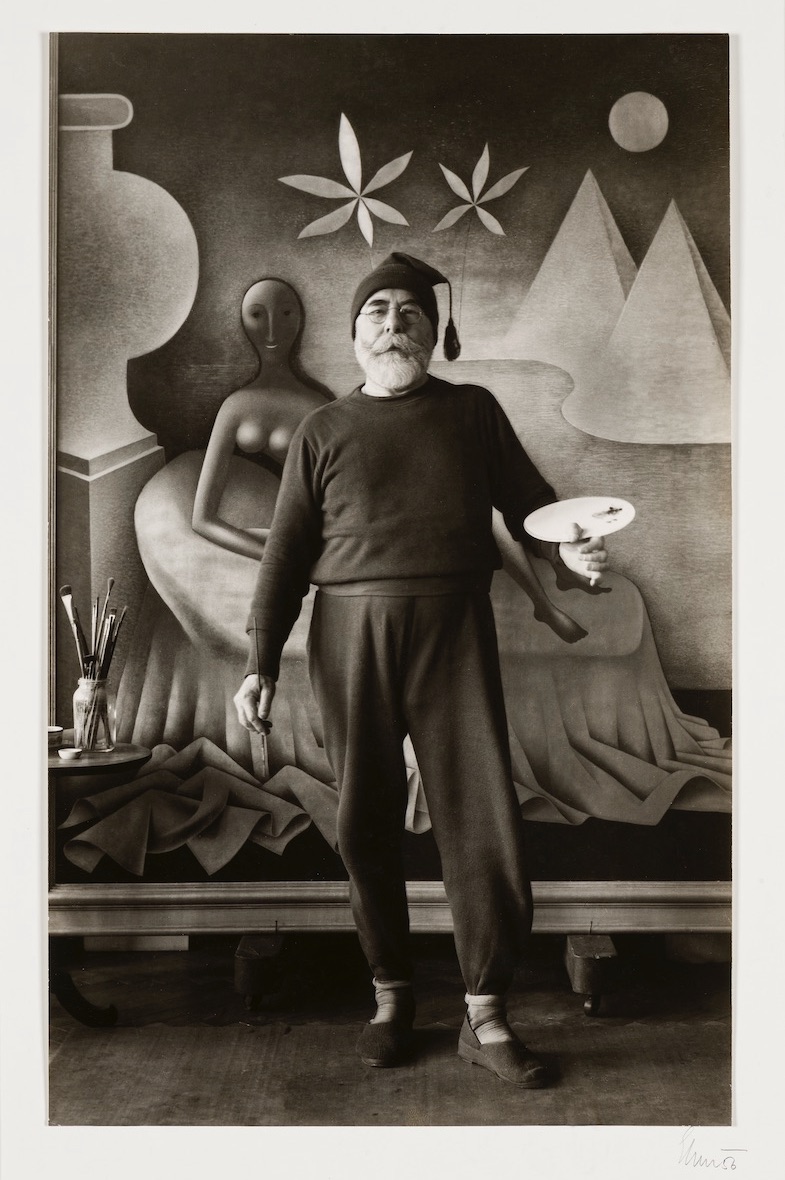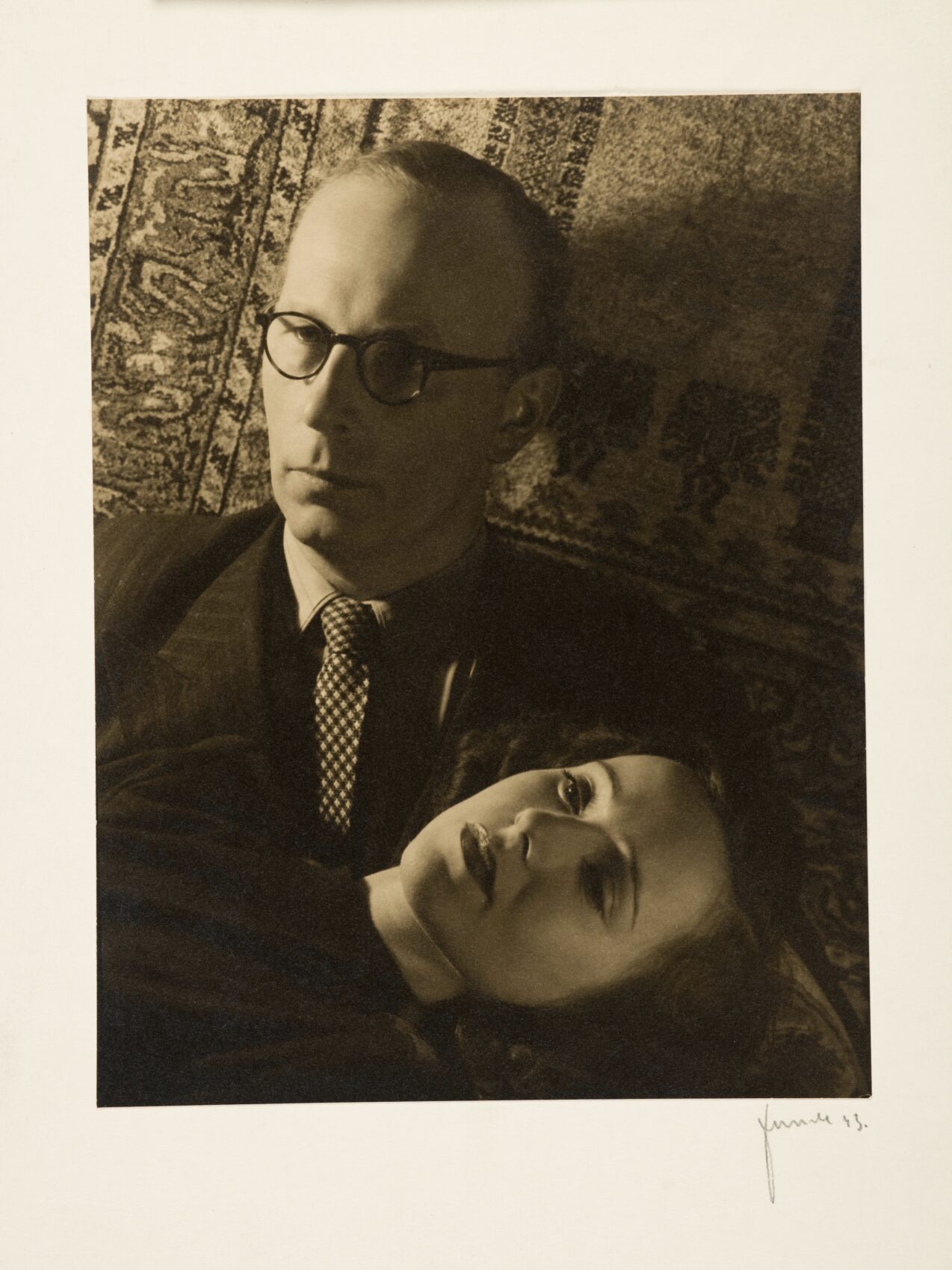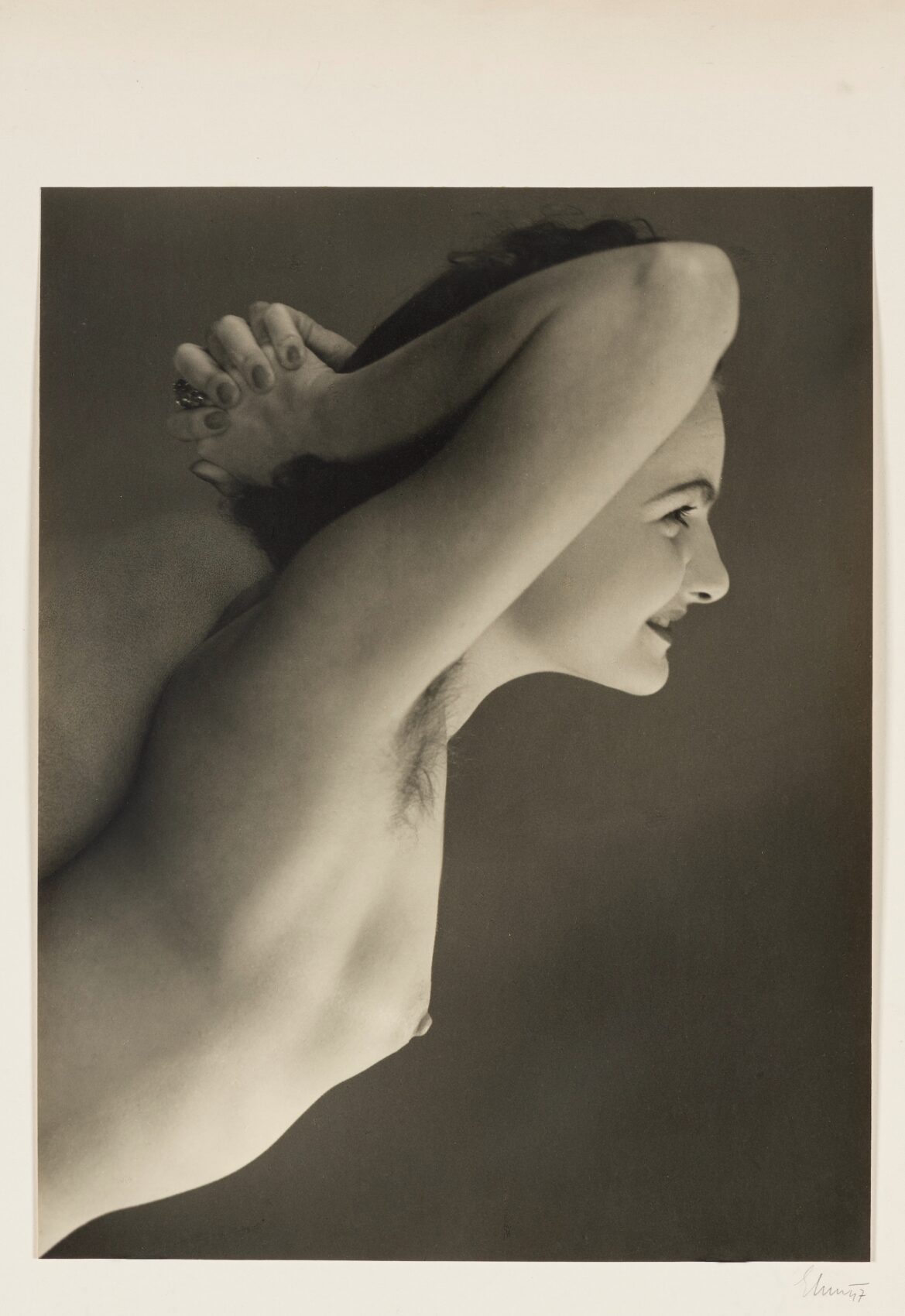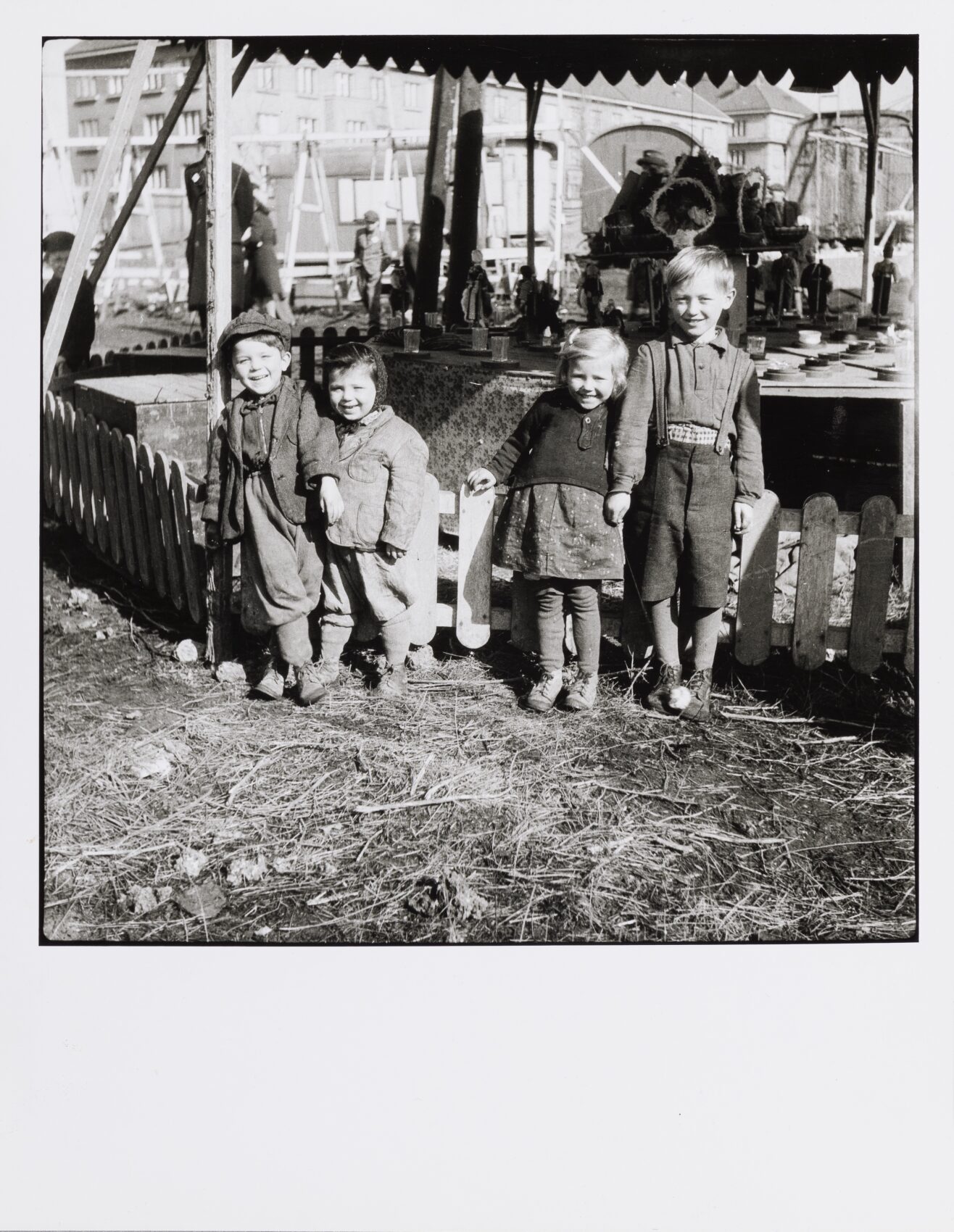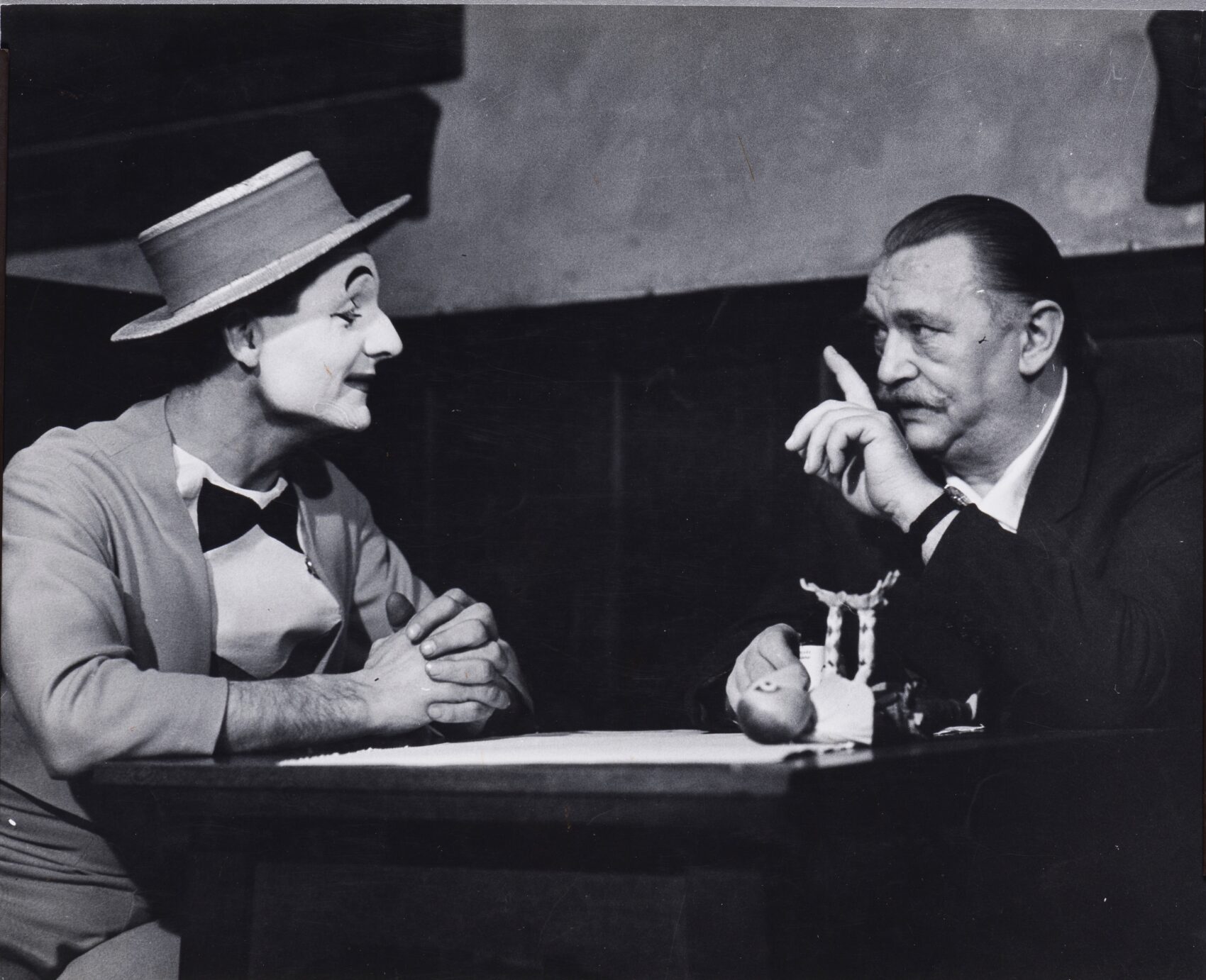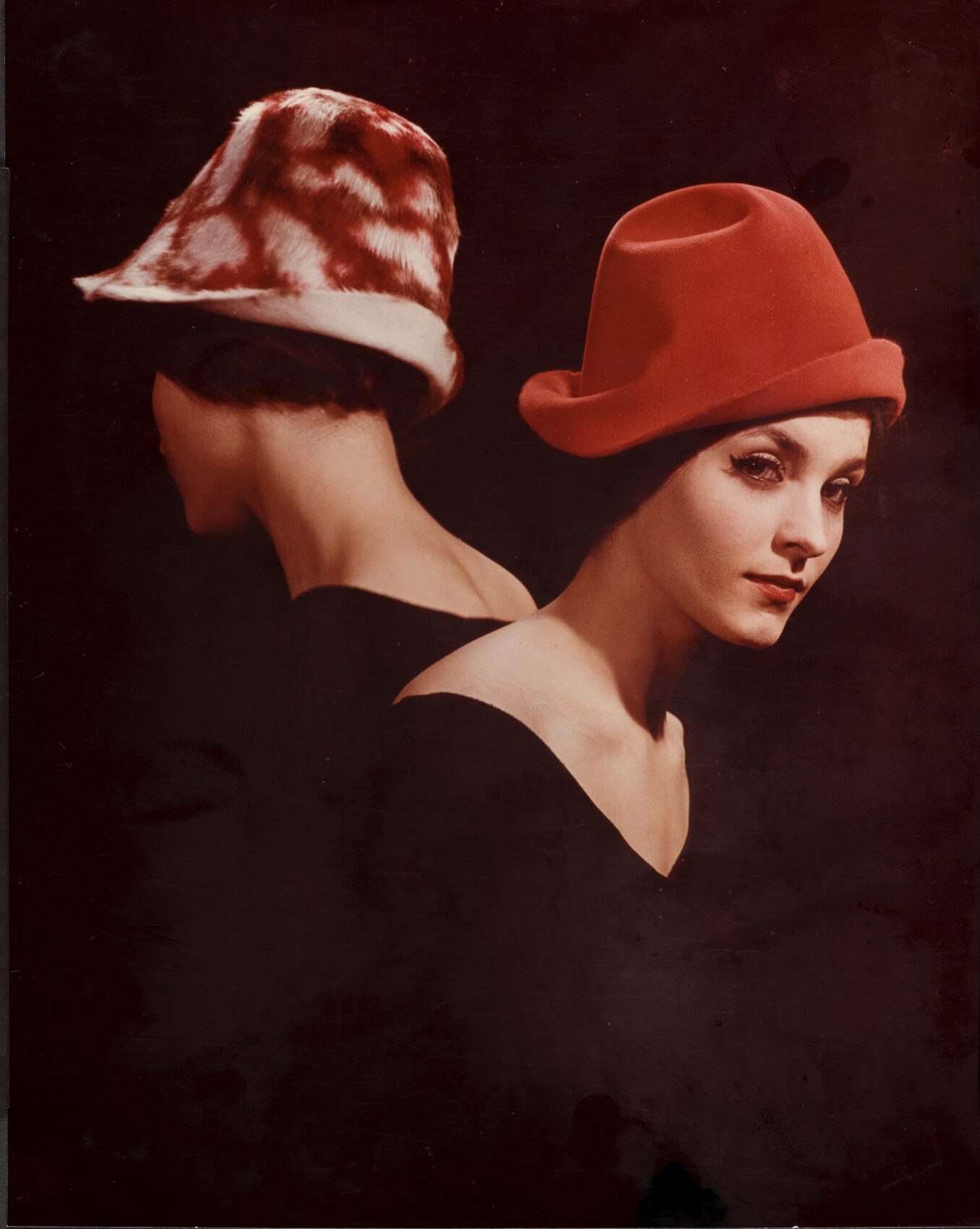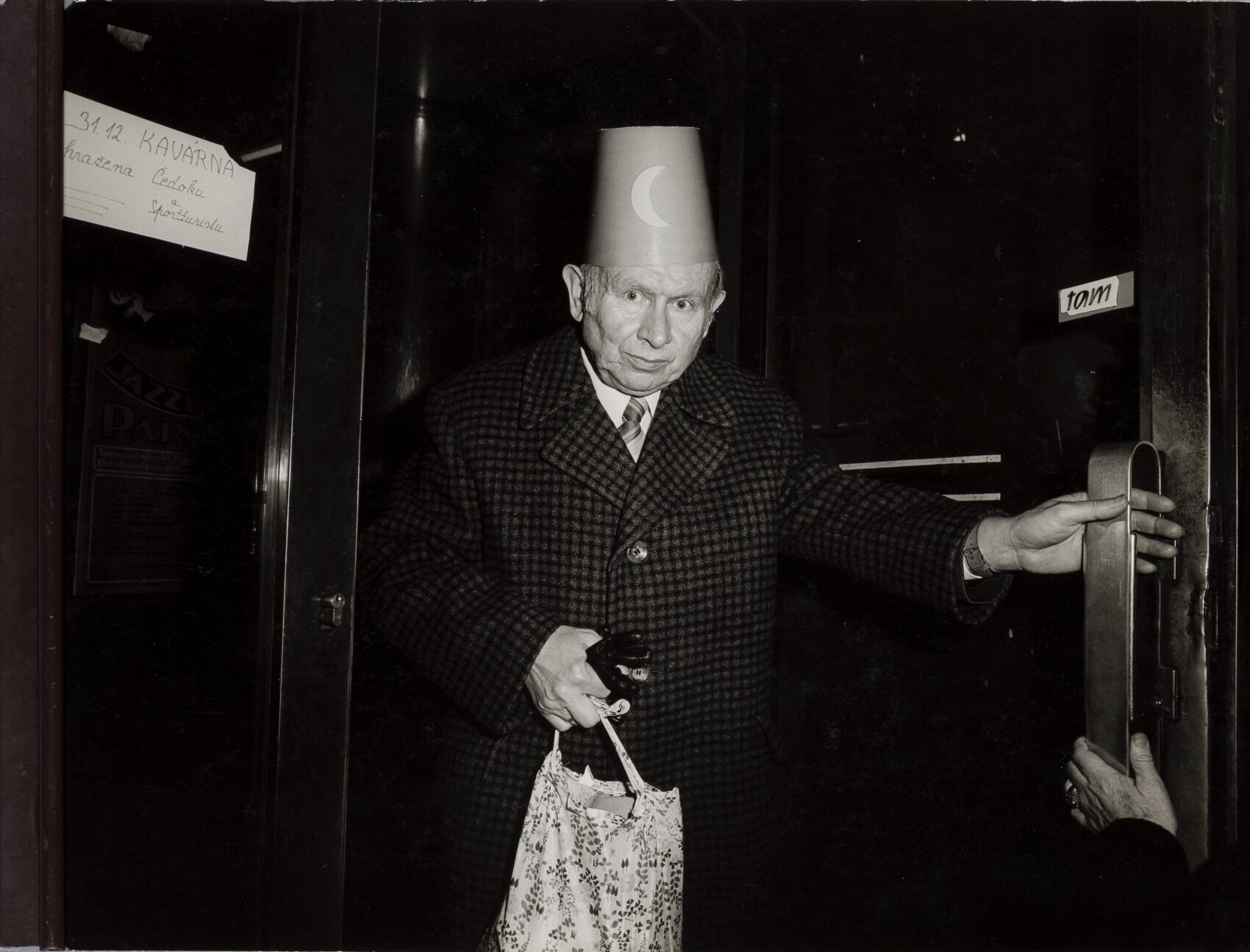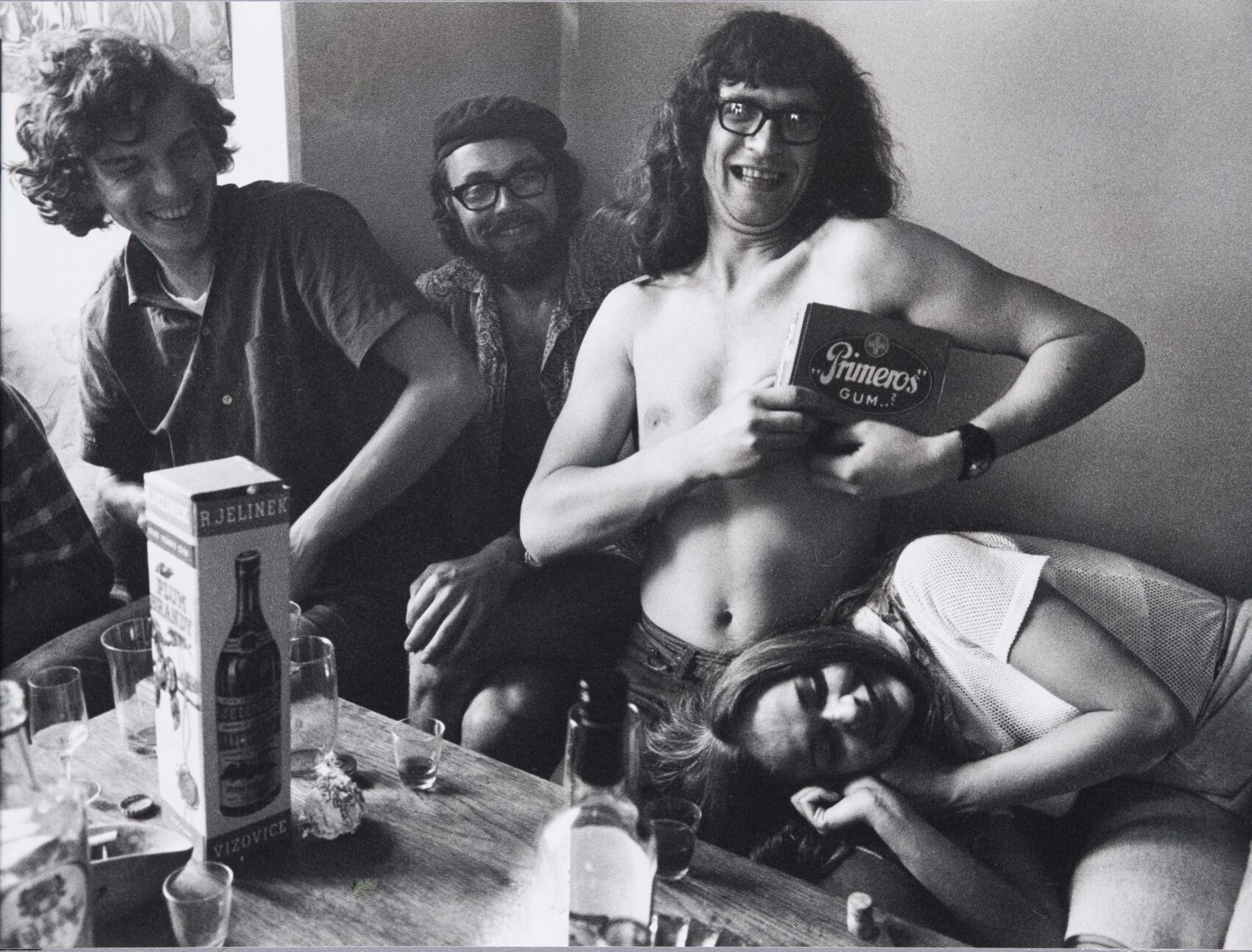01.10.2020–12.09.2021
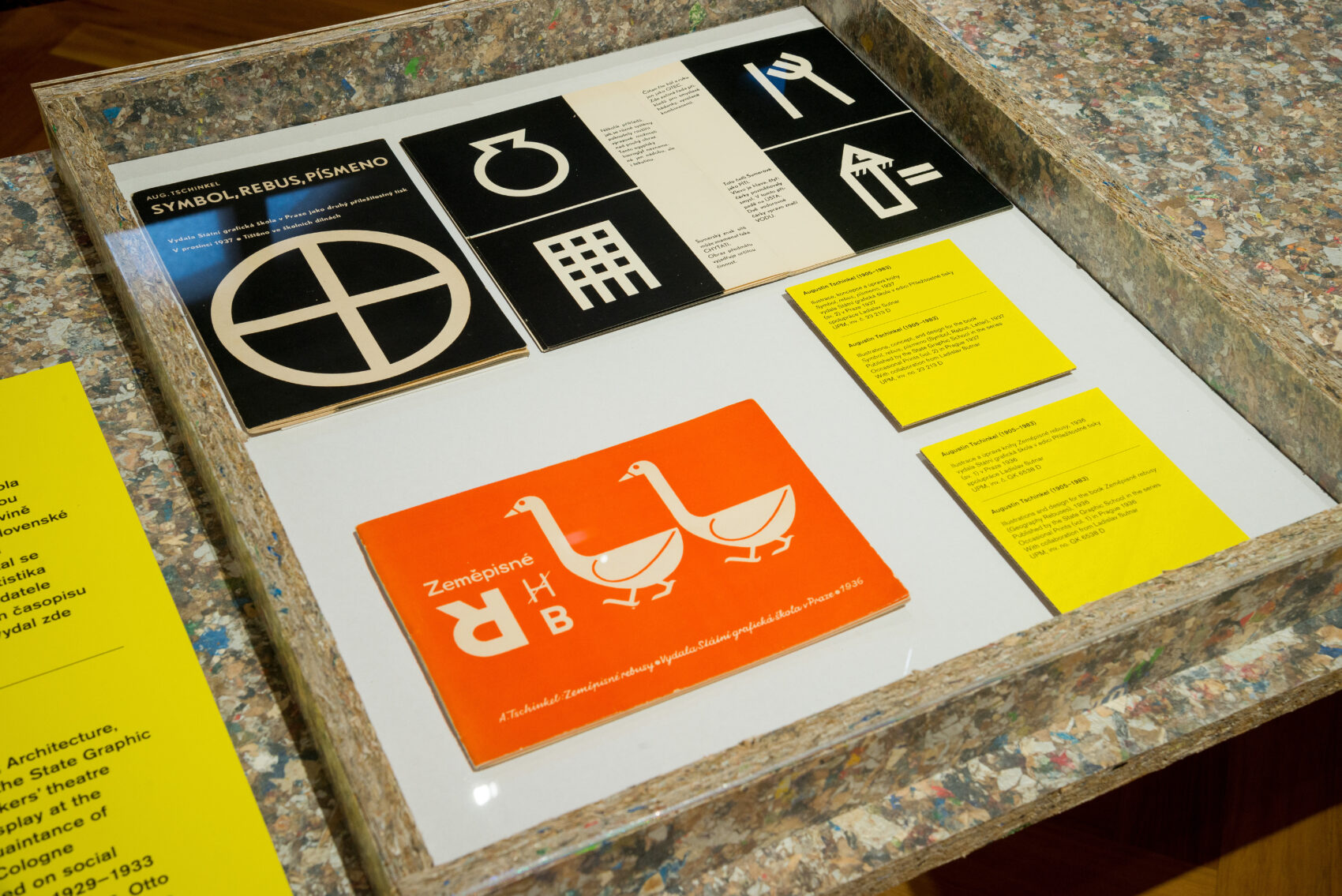
Curator: Libuše Staňková
Texts: Libuše Staňková, Radim Vondráček, Jan Mlčoch, Iva Knobloch, Lucie Vlčková
Architecture and graphic design: Matěj Činčera, Jan Kloss, Adam Blažek
A Hundred Years of the Prague Graphic School documents the history of this eminent educational institution from its founding in 1920 to the present day. The exhibition presents prominent figures of the teaching staff who fundamentally shaped the way photography, graphic design, bookbinding, conservation and restoration, and other subjects have been taught at the graphic school over the course of its existence. Attention is also given to the pupils who received their first professional training at the school, which they further developed through study and work to make a broad-ranging impact on visual culture both at home and abroad.
The school was established on the impetus of the Chamber of Commerce and Trade in Prague, which had already been organising educational courses for bookbinders, typographers, and photographers before World War I. On 30 September 1920, the State Vocational School of Graphics was established by decree of the Ministry of Education and National Enlightenment. Lessons took place in the building of the Museum of Technology in what is now Opletalova Street; the first year enrolled 12 students in bookbinding, nine in photography, and five in the reproduction department. The standard courses were complemented with an offer of further education for trainees, who generally took part in lessons once a week. The teaching staff included prominent artists and specialists. Photography was taught by Karel Novák, an excellent portraitist and a professor of the graphic school in Vienna; the bookbinding department was headed by Ludvík Bradáč, a publisher of collector’s editions and promoter of beauty in books. Rudolf Kremlička was in charge of figure drawing, while production drawing was taught by Vratislav Hugo Brunner and Jan Konůpek. The school’s first pupils included the photographer Josef Sudek or the bookbinders Petra Pospíšilová and Jindřich Svoboda.
In the 1930s the artistic direction of the school was strongly influenced by Ladislav Sutnar. Under his tenure the institution was transformed from a vocational training centre into a cutting-edge school that espoused modern attitudes to artistic education in the spirit of the German Bauhaus and responded to the needs of the time, especially by accentuating advertising work and progressive teaching methods. Sutnar invited collaboration from innovative personalities the likes of the photographers Jaromír Funke and Josef Ehm, the cinematography expert Rudolf Skopec, the pre-eminent typographer Stanislav Maršo, or the graphic artist Augustin Tschinkel, who promoted picture statistics and modern visual communication. The school also participated in large exhibition projects and maintained its own publishing operation with the works of leading theorists and with visual publications prepared by its pupils in school workshops.
During World War II, the school functioned to a limited extent, but even so it managed, among others, to establish a separate drawing department. Lessons were stopped completely in the last two years of German occupation, and the students were forced to labour in the war industry. After the war, the school was expanded to include study programmes in graphic reproduction techniques and book printing. The high technical and material demands of these disciplines led to the division of the school. And so in 1949 the printing departments and the photography department newly constituted the Technical Graphic School based in present-day Hellichova Street (hence the institution’s popular nickname, “Hellichovka”), while drawing and other departments formed the College of Applied Arts, later renamed the Václav Hollar Art School (dubbed “Hollarka”).
Today’s “Hellichovka”, that is, the College of Graphics and Secondary Technical School of Graphics in Prague, draws on the best traditions of the interwar State Graphic School and on the high-quality tuition more closely related to the practice of the 1950s through 1970s. The cornerstone of the current educational concept is the interconnection of creative and technological disciplines with significant overlap between the study plans of the individual programmes, which cover printing, photography, media graphics, and conservation and restoration at both levels of education.
The exhibition is the result of close cooperation between the Graphic School and the Museum of Decorative Arts in Prague, which has contributed a significant part of the historical materials from its collections. The ties between the two institutions also enjoy a hundred-year tradition. In the very first year of its existence, the school’s pupils participated in a bookbinding exposition organised by the museum, followed by other exhibitions and contests. At present, the conservation department maintains the closest relations with the Museum of Decorative Arts, with pupils and students conserving exhibits from the museum’s depository as part of their graduation assignments, while several employees of the museum also teach at the school.
The Museum of Decorative Arts – main building
17. listopadu 2
110 00 Prague 1
Opening Hours
Tuesday 10 a.m.–8 p.m.
Wednesday – Sunday 10 a.m.–6 p.m.
Monday closed
Addmission for all branches
full CZK 150 | concession CZK 80
